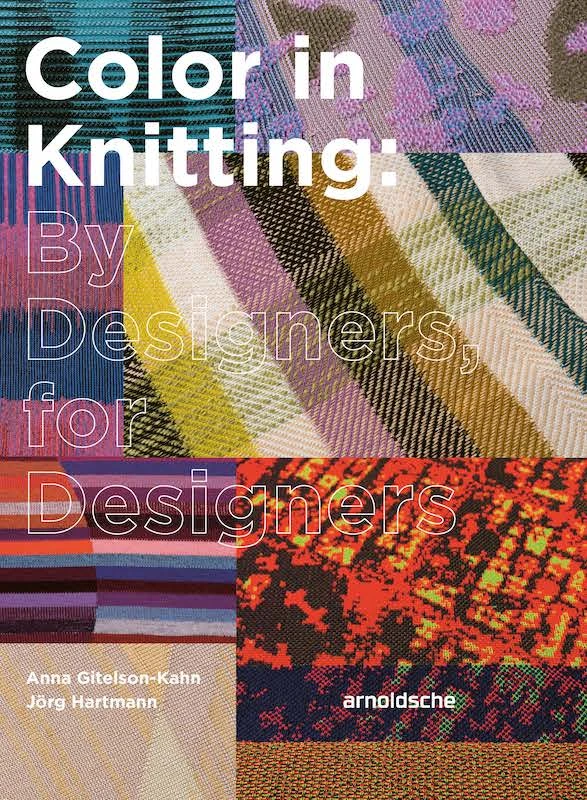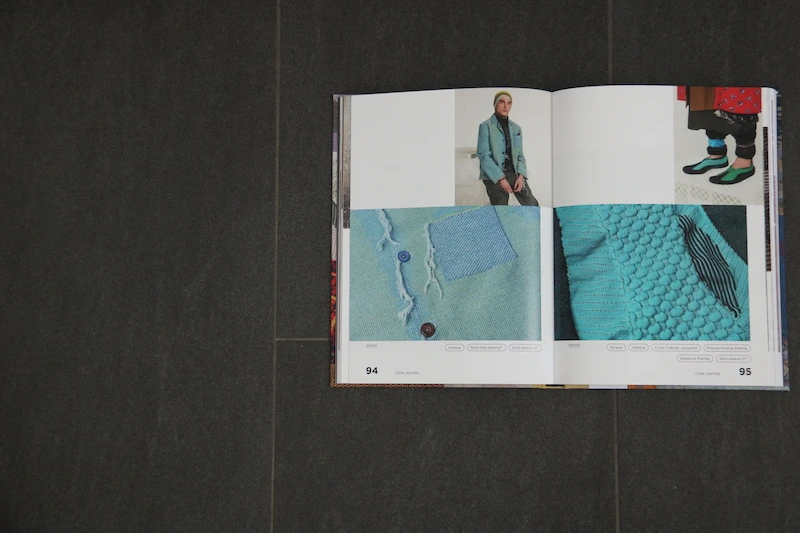Jörg Hartmann, one of the authors of the book “Color in Knitting: By Designers, for Designers”, explains the aims of the new reference work
In June 2023, the reference work “Color in Knitting: By Designers, for Designers” had its premiere. The publication not only contains a large number of diverse flat knitting patterns for inspiration, but also provides information on how the creations are implemented using the technical solutions provided by STOLL, the flat knitting division of the KARL MAYER GROUP.
The authors of the book include Anna Gitelson-Kahn and Luca Missoni, as well as Jörg Hartmann. Ulrike Schlenker from the KARL MAYER GROUP’s Corporate Communication team spoke to the head of the Fashion & Technology department at STOLL about the details of the practical compendium.
US: How did the idea for this book come about?
JH: The idea for this book had been in our minds for many years but became more concrete in discussions with colleagues on the planning of ITMA 2023, the celebration of 150 years STOLL brand and the release of our latest STOLL Trend Collection, about a year ago. While exchanging our ideas, we also touched up on our traditional anniversary books from the past.
We all felt that literature of this kind loses attractiveness rapidly and thus collect dust on book shelfs. Therefore, we wanted to issue a seminal reference work as an alternative. We imagined a guidebook for daily use, a publication that could support our indirect and direct customers alike with basic know-how on designing knitwear based on the STOLL technique.
This approach allowed us to reference our samples from our historical archive – and thus for our jubilee – for our new Trend Collection and for the concept of our ITMA presentation. Skill shortage is one of the biggest customer pain points today which makes the book a valuable knowledge source for further qualification of staff.
US: Who are you addressing with the book and what do you want to achieve?
JH: Our target group are creatives from all design disciplines. Be it in apparel-, textile-, or industrial design.
What we wanted to achieve with this book can be described in an example scenario: imagine a fellow designer is currently creating an artwork for a specific knitted product, for example a fabric for seating furniture, a speaker cover, or a garment.
For research and inspiration purposes, they pick up an illustrated book from the design studio book collection or browses the internet. They will find a plethora of image materials but will be left without any substantial information on how these images can possibly be translated into knits.
Now let us assume further, that among the available books they discover “Color in Knitting, By Designers, for Designers”. They would not only be led through pattern images but also learn how these patterns were technically made, say on a STOLL ADF technique, and how they can modify them further.
Imagine they are not familiar with ADF techniques but like the outcome, they will certainly study the technical details in the technology chapter or get straight into contact with the companies’ vendors and ask for ADF technology. The book can help in communication with vendors as it also provides designers with the proper technical terms and even stitch diagrams.
There are countless scenarios on how the book can be instrumental for designers and manufacturers alike.
US: The book offers a comprehensive overview of the design possibilities of flat knitting and is not limited to patterns and colors. The necessary flat knitting techniques are also presented. How large was the STOLL team for developing the wide-ranging content? Which departments were involved?
JH: The entire team of the Fashion & Technology department was involved in the book development. Every single employee contributed with their knowledge and skills.
We all were well aware of how deep we are actually rooted in the subject matter and thus had always concerns as to whether we would be able to present the content in a way that outsiders could understand. For this reason, we asked Professor Anna Gitelson-Kahn from the Rhode Island School of Design to contribute as co-author with her academic perspective and experience from teaching practice.
US: What content are you particularly proud of and why?
JH: I was very touched by Luca Missoni’s foreword as it is his testimonial as a teenager exploring his creative self-efficacy in direct contact with knitting technique, colors, structures and haptics. The young person so aptly and exemplarily describes exactly that “mysterious” experience that so many novice knitters experience when operating a hand flat-knitting machine. Be it in a course at STOLL or at one of the many technical- or design colleges. The foreword is written very personal and a wonderful gift from a customer.
US: Digital media have become firmly established as sources of information in our daily work. You have chosen a book format. What prompted you to do so?
JH: The short answer is that designers love books. The long answer is that the physical manifestation of the book has a special effect on how the reader interacts with it. There would be a lot to say about this, but it would go beyond the scope of this article.
I would like to mention one aspect, however, and it is related to my remark at the beginning, namely that designers love books. The most outstanding characteristic property of textiles is their tactile information which they unfortunately lose when being photographed. This particularly applies to digital representations on screens.
The medium of the book can be experienced haptically, by flipping through the pages. One can sense the change of different paper surfaces such as coated and uncoated ones. It is therefore why Designers who work with textiles give particular importance to tactile products. Statistics speak their own language as it is fact that eBooks only account for a fraction of the entire book market. In Germany, for example, eBook sales are stagnating at 5% of the market.
Moreover, digital content tends to vanish into the depths of hard drives or the web. Content in book form, on the other hand, is always accessible, for example in libraries.


































